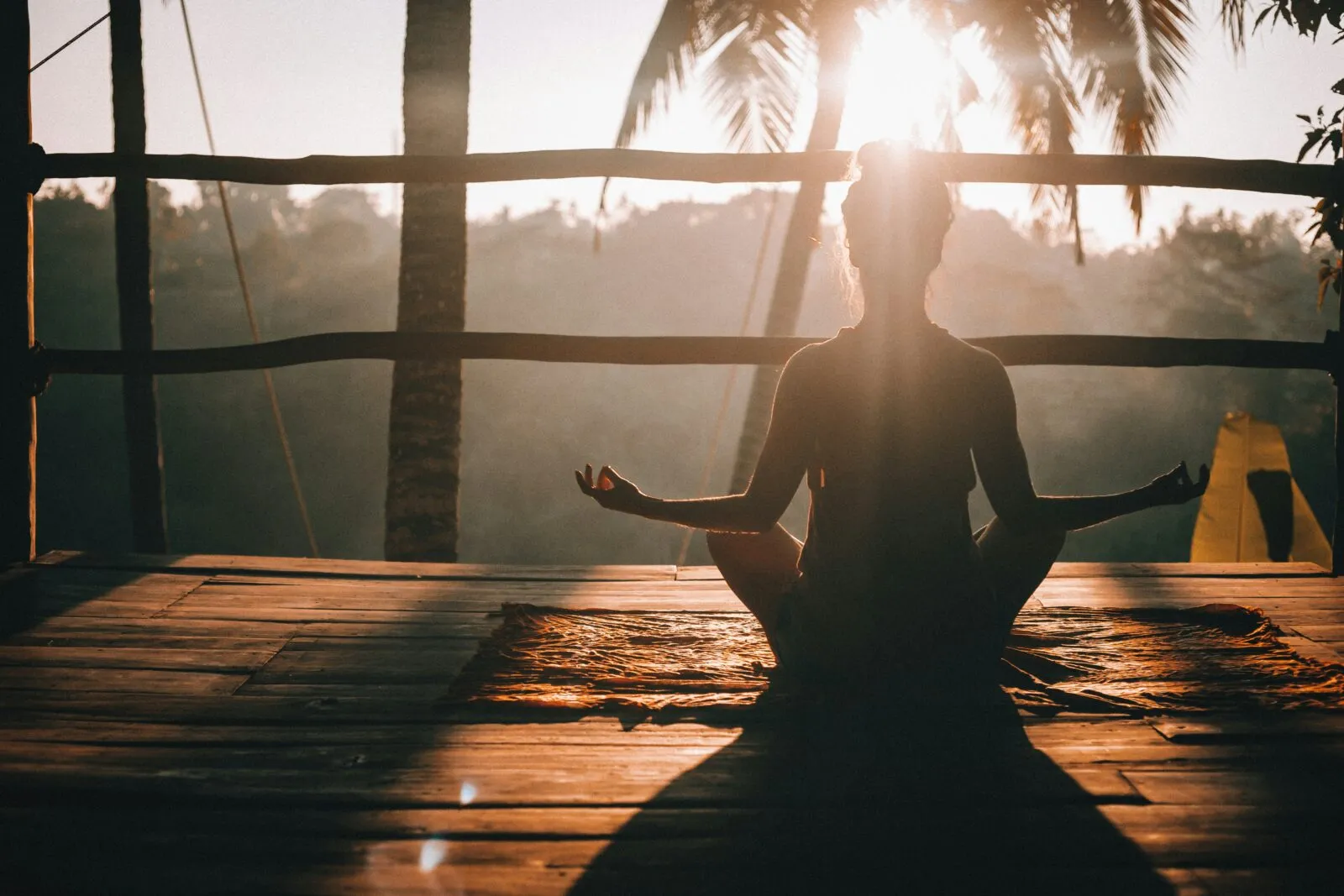It’s a well-known fact that being in nature is good for your mental and physical health. But for many of us, stepping into the great outdoors for a forest bath or a hike isn’t something we can do regularly. In that case, you can double up on your self-care by doing yoga—yoga that connects you to the rainforest, to be precise. Not sure where to begin? Read on.
Tree pose
Tree pose can sometimes feel more like “one-legged hopping bunny” pose. Balance is hard! But here’s a good trick to help steady you: After bringing one foot to the inside of the opposite thigh, imagine that your standing leg is the trunk of a mighty kapok tree, with roots that stretch deep into the Earth.
How deep do those kapok roots go? All the way down to the underworld, according to Maya mythology. Above ground, this rainforest giant can grow 200 feet tall, with its huge trunk providing a home for bromeliads and frogs, and its awe-inspiring canopy reaching for the heavens. The kapok is found in southern Mexico, where the Rainforest Alliance works with Indigenous communities.
Together, we’re building a future where people and nature thrive. Sign up today and join our movement.
"*" indicates required fields
Mountain pose
For mountain pose, you merely stand with your feet hip-width apart, arms at your sides, palms facing forward. Easy, right? Yes and no. To get the full benefit of this pose, you need to ground yourself in the Earth beneath you and embody the solidity of, well, a mountain.
For this part, we suggest you breathe deep and imagine yourself as massive and majestic as Mount Kenya, the second-highest peak in Africa (after Kilimanjaro). An extinct volcano, Mt. Kenya hosts an array of wildlife, fast-melting glaciers, forests, and farmland. The Rainforest Alliance works in this gorgeous landscape to support local growers confronting climate change and to stop deforestation.
Half-frog pose
It’s no secret that the Rainforest Alliance loves frogs. We chose a red-eyed tree frog to be our mascot more than 35 years ago because healthy frog populations signal healthy ecosystems—and we’ve been on a mission to protect ecosystems, forests, and communities since day one.
As much as we love frogs, we find this pose a bit tricky to explain, but here goes: Lie on your stomach and place your forearms on the floor in front of you, arching your back. Bend one of your legs at the knee, moving your foot toward your bum; lightly grasp that foot with your hand.
Confused? We can’t blame you. Maybe understanding this pose would be easier if you knew precisely what kind of frog you are. Take this quiz and find out!
Monkey pose

Black howler monkeys, found only in the rainforests of the Americas, are famous for their gravelly roar, which can be heard two miles away. As menacing as they may sound, they are fairly mellow creatures, walking—not jumping—from limb to limb of tall rainforest trees, and eating a vegetarian diet of nuts, berries, and flowers. In the Popol Vuh, the Maya book of creation, these monkeys were viewed as protectors of scribes and artists.
Monkey pose is essentially the splits—which is enough to make almost anyone howl. But if you’re flexible enough for this pose, you’ll stretch major muscle groups and build core strength. And if you’re not, you can connect with the artistic mythology behind these noisy primates with this howler monkey coloring page. Coloring may not work your abs like yoga does, but it does improve mindfulness.
Corpse pose
Corpse pose is a classic way to end a yoga session. As the name would suggest, you lie on your back and allow yourself to sink deeply into the Earth, completely unfurling, just as Rafflesia arnoldii does in this time-lapse footage. Also known as the stinking corpse lily, this enormous flower—the largest in the world—emits a notoriously foul odor, akin to the smell of decaying flesh. (Before you wrinkle your nose, remember you may be smelling a little ripe yourself after your workout.)
Witnessing the stinking corpse in full bloom is rare indeed. A colleague of ours in South Sumatra camped out for eight days to get the footage you see above! Coffee farmers we work with near South Sumatra’s Bukit Barisan Selatan National Park have even been able to supplement their incomes with eco-tourism, leading botany enthusiasts around their land to view—and smell—this amazing flower.




